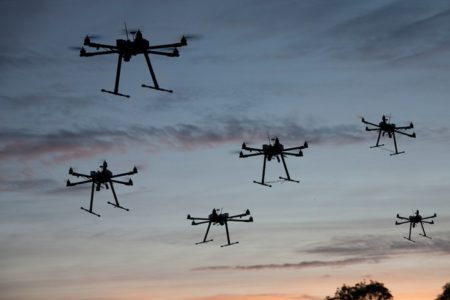October 10, 2019 – We are witnessing a convergence of technologies today that will yield the Smart Web, 5G telecommunications global networks, satellite-based Internet connectivity, the deployment of trillions of smart sensors and devices known as the Internet of Things (IoT), and robots governed by artificial intelligence (AI) algorithms that will become ubiquitous in militaries around the world.
Of all of these, one stands out as very troubling, robots in the military, because they can use the other technological advances to become machines of war that could disable not just enemy robots, but also kill their human creators. Add to this the potential of human or robotic intelligence hacking into the robots in your military to turn them against you and you can imagine the disastrous implications of such activity.
Hackers have been honing their trade by attacking domestic and industrial robots, altering safety settings, or turning their audio and video capabilities into spying devices. In a 2017 study of robot operating systems and software, hackers identified 50 security weaknesses including:
- poor cryptographic systems
- vulnerable default configurations
- bad authentication and password practices
In an incident in 2011, Iranians claimed they hacked an American drone and redirected it to land in their territory. If that drone had been armed, could the hackers have turned it against its former masters? In a 2015 article appearing in the journal, Communications of the ACM, authors John Arquilla and Duncan Buell asked this very question and then stated, “A coup of this sort would require a high level of technological sophistication and an absolute mastery of the radio-electromagnetic spectrum, but the consequences of one side being able to do this would be catastrophic for the side whose robots were taken over.”
What started off as reconnaissance drones today have become remotely-operated killing machines which are controlled by “pilots” sitting in front of terminals thousands of kilometers away. Imagine if one of these killer drones gets hijacked in a war where it bombs its operators rather than the enemy.
Killer drones are the tip of the military robot iceberg of technology being developed and tested to become the next generation of killing machines. Today the drones are either not autonomous or semi-autonomous. But there is no doubt that military developments will soon make battlefield robots fully autonomous in support of troop deployments.
In a Guardian article published in April of 2018, it reported: “at least 381 partly autonomous weapon and military robotic systems have been deployed or are under development in 12 states, including China, France, Israel, the UK, and the US.” The US is making autonomy a central feature of its military robotics strategy. And others are no doubt doing the same creating an arms race in which countries like Russia and China are at the forefront while lesser regional powers like Iran, Saudi Arabia, Israel, India, and Pakistan are joining in.
The current list of US military robots includes autonomous aircraft, anti-submarines, tanks, and more. Russia’s President recently stated, “whoever leads in AI will rule the world.” Hence Russia has developed its own robot tank, and autonomous gun platforms. Not to be outdone, China is working on semi-autonomous seaborne boat swarms, aircraft, and tanks. And every one of these weapon systems is just as vulnerable to hacks as any other computing platform.
The inanimate machines that these militaries are building around the world could one day be turned on their creators. Noel Sharkey, a professor of AI and robotics, the University of Sheffield, United Kingdom, described what a robot apocalypse of hacked autonomous machines would look like. He is quoted stating:
“Imagine swarms of autonomous tanks and jet fighters meeting on a border and one of them fires…because it has been hacked…This could automatically invoke a battle that no human could understand or untangle. It is not even possible for us to know how the systems would interact in conflict. It could all be over in minutes with mass devastation and loss of life.”
Lots of voices are being raised against what appears to be a common policy direction for militaries in a number of countries across the world. Since 2014, the United Nations has been trying to develop a treaty to regulate military robots and ban killer robots outright. Some 80 countries have been involved in these discussions with little in the way of progress largely because the US, UK, and Russia have been opposed. As a result, nothing is in place to reign in the research and development of these semi to fully-autonomous AI killing machines.









